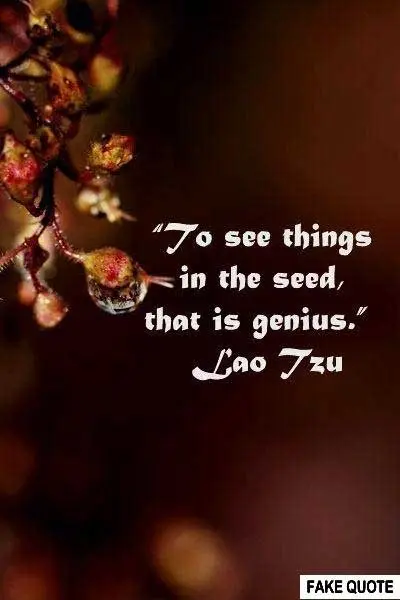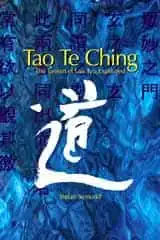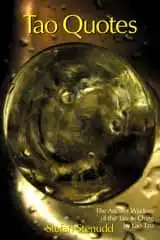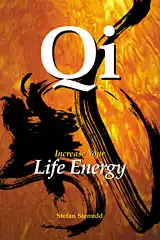Fake Lao Tzu Quote
"To see things..."

This is NOT a quote from Tao Te Ching:
"To see things in the seed, that is genius."
The Book
The Taoism of Lao Tzu Explained. The great Taoist philosophy classic by Lao Tzu translated, and each of the 81 chapters extensively commented. Click the image to see the book at Amazon (paid link).
More about the book here.
|
Lao Tzu made no mention of either seed or genius in Tao Te Ching. The former is a word he might have used, but certainly not the latter. He spoke of the sage, who had an understanding of Tao, the Way. Although he knew that few understood it, he had no doubt they would be able to if they just listened. He wrote in chapter 70 (my version):
My words are very easy to understand
And very easy to practice.
Still, no one in the world
Can understand or practice them.
It was not that they needed to be geniuses to understand. It was more like they just did not care, or their minds were too full of misconceptions.
|
90 of the most spread false Lao Tzu quotes, why they are false and where they are really from. Book by Stefan Stenudd. Click the image to see the book at Amazon (paid link).
More about the book here.
|
The term genius and what it stands for today is something developed in the 18th and 19th centuries. It points to an intellectual capacity that someone is born with, not accessible to others by no matter how much schooling. It was not a concept relevant to Lao Tzu, should he have been familiar with it.
So, this is not a Lao Tzu quote, but it is very likely inspired by something he wrote — chapter 64 in Tao Te Ching. Its beginning reads:
Stillness is easy to maintain.
What has not yet emerged is easy to prevent.
The brittle is easy to shatter.
The small is easy to scatter.
Solve it before it happens.
Order it before chaos emerges.
Lao Tzu pointed out that even the biggest problem is small in the beginning. But if left unsolved for long, it grows into something that finally risks being insoluble. He mentioned the same in chapter 63:
Meet the difficult while it is easy.
Meet the big while it is small.
It doesn't take a genius to understand that. The trick is to recognize the problem when it is so small that it is hardly a problem at all.
This crux is well known also outside ancient China. There is an expression in English with the same message: to nip something in the bud. It was first recorded in 1606 in the play The Woman Hater, by Francis Beaumont and John Fletcher, published in 1607. In act 3, scene 1, the character Oriana says:
I doe confess I am to easie, too much woman,
Not coy enough to take affection,
Yet I can frowne and nip a passion
Euen in the bud.
She might not speak of the kinds of problems Lao Tzu treated, but the solution is the same.
The oldest book I have found to contain the exact quote examined here is Creative Innovators from 1988, compiled by Dottie Walters, accrediting it to Lao Tzu (page 273). The book contains one more Lao Tzu quote, equally dubious (page 112): "Knowing others is wisdom, knowing the self is enlightenment." That quote is discussed in the chapter Knowing others.
One year earlier, though, a variation of the quote, beginning "if you can" instead of just "to," was published in Movers, Shakers, and Change Makers, by John Patrick Dolan (page 272). It gives Lao Tzu (spelled Lao Tsze) as the origin, mistakenly adding that he was the mentor of Confucius. I have not found the quote worded like that elsewhere.
There is another version of the quote floating around, with a shorter wording:
To see things in the seed is genius.
The oldest book with that version of the quote is From Ordinary to Extraordinary from 1990, by Shall Sinha (page 141), also ascribing it to Lao Tzu. So are most, if not all, web pages with the quote.
On the web, the quote started to appear a couple of years into this millennium — always, as far as I have seen, ascribing it to Lao Tzu and never giving a source for it.
I have not found any older source to the quote than the books from 1987 and 1988 mentioned above, though I suspect there is one somewhere. If this is not a quote from someone else, mistakenly accredited to Lao Tzu, it is probably a very short interpretation of chapter 63 or 64 in Tao Te Ching.
Stefan Stenudd
September 22, 2020.
There are many more fake Lao Tzu quotes examined on this website.
Click the header to see a list of them.
Click the header to read a "fake" interview with Stefan Stenudd, the author of
Fake Lao Tzu Quotes.
My Taoism Books
Click the image to see the book at Amazon (paid link).
The Taoism of Lao Tzu Explained. The great Taoist philosophy classic by Lao Tzu translated, and each of the 81 chapters extensively commented.
More about the book here.
The Ancient Wisdom of the Tao Te Ching by Lao Tzu. 389 quotes from the foremost Taoist classic, divided into 51 prominent topics. Click the image to see the book at Amazon (paid link).
More about the book here.
Erroneous Tao Te Ching Citations Examined. 90 of the most spread false Lao Tzu quotes, why they are false and where they are really from. Click the image to see the book at Amazon (paid link).
More about the book here.
|
My Other Websites:
The 64 hexagrams of the Chinese classic
I Ching and what they mean in divination. Try it online for free.
The ancient Chinese life energy
qi (
chi) explained, with simple instructions on how to exercise it.
The many ancient and modern life force beliefs all over the world explained and compared.
Other Books by Stefan Stenudd
Click the image to see the book at Amazon (paid link).
The Greek philosophers and what they thought about cosmology, myth, and the gods.
The life energy
qi (also
chi or
ki) explained, with exercises on how to awaken, increase and use it.
Basic concepts of the peaceful martial art. Aikido principles, philosophy, and fundamental ideas.
Qi, prana, spirit, ruach, pneuma, and many other life forces around the world explained and compared.
Jungian theories on myth and religion examined, from Carl G. Jung to Jordan B. Peterson.
About me
I'm a Swedish author and aikido instructor. In addition to fiction, I've written books about Taoism and other East Asian traditions. I'm also an historian of ideas, researching ancient thought and mythology. Click the image to get to my personal website.

 Tao Te Ching
Tao Te Ching Now it's a book, too!
Now it's a book, too! Tao Quotes
Tao Quotes Cosmos of the Ancients
Cosmos of the Ancients Qi — Increase Your Life Energy
Qi — Increase Your Life Energy Aikido Principles
Aikido Principles Life Energy Encyclopedia
Life Energy Encyclopedia Archetypes of Mythology
Archetypes of Mythology Stefan Stenudd
Stefan Stenudd